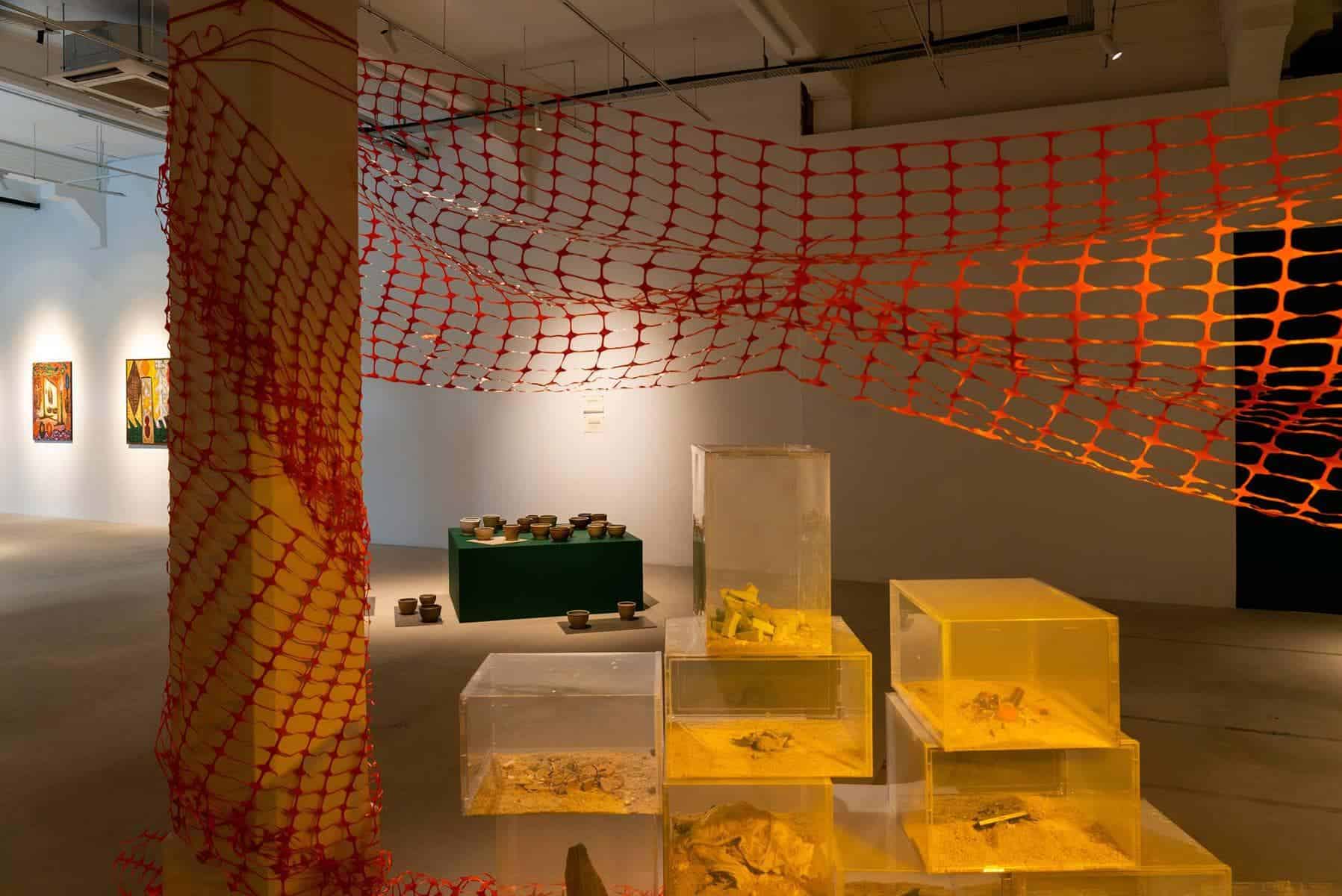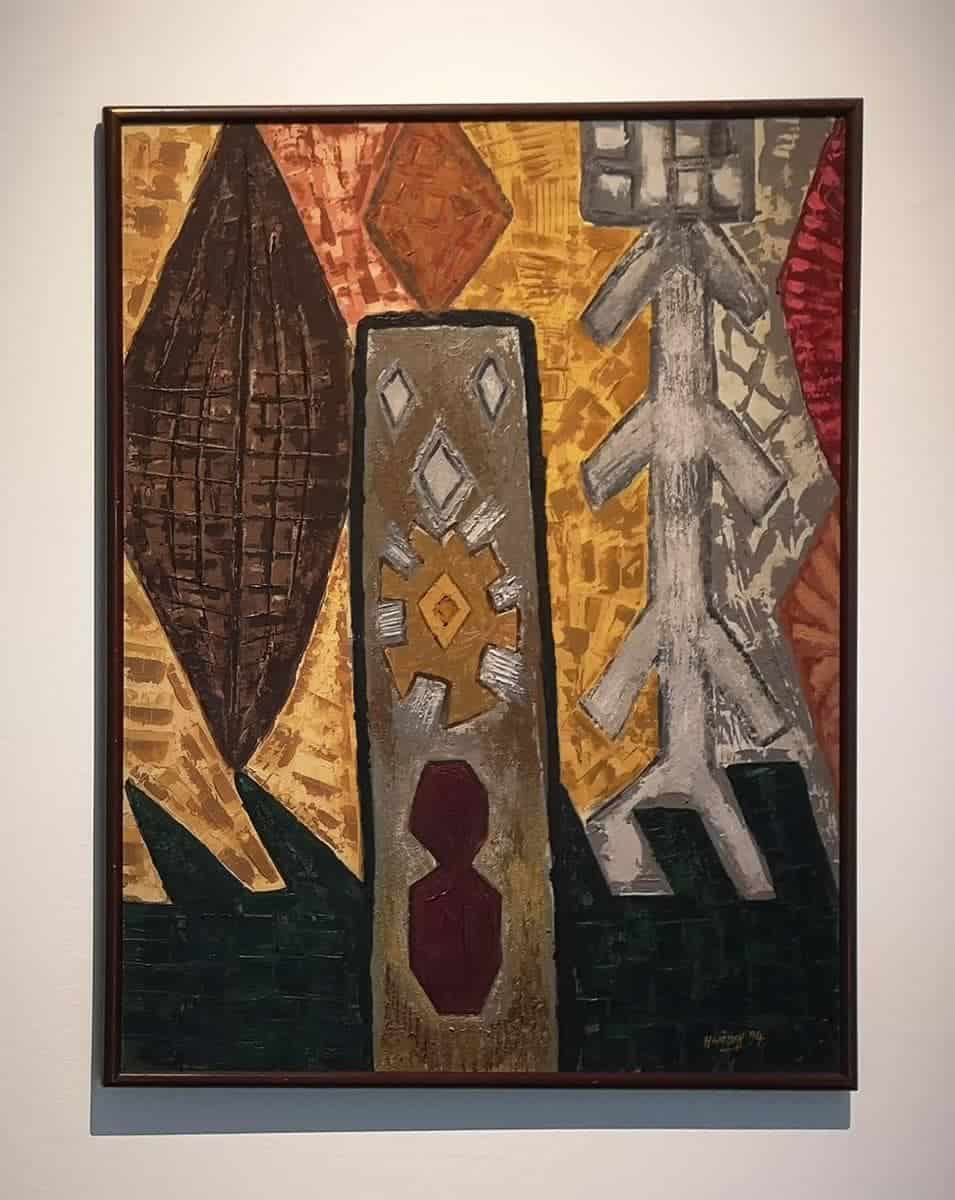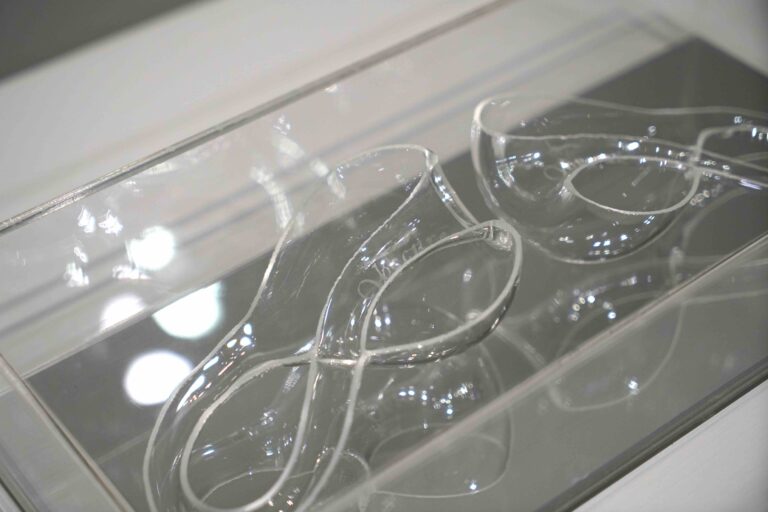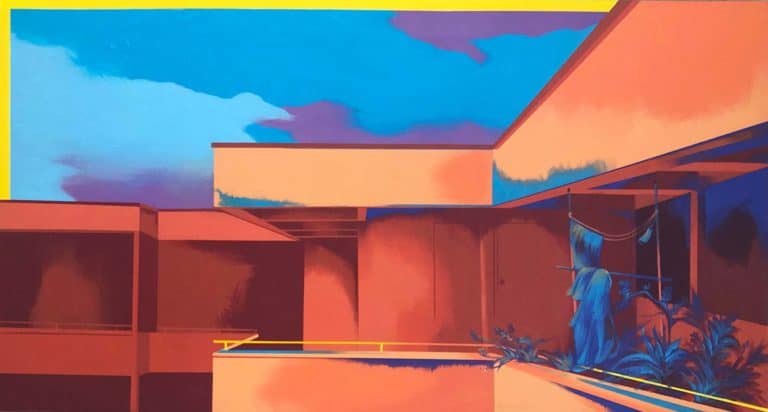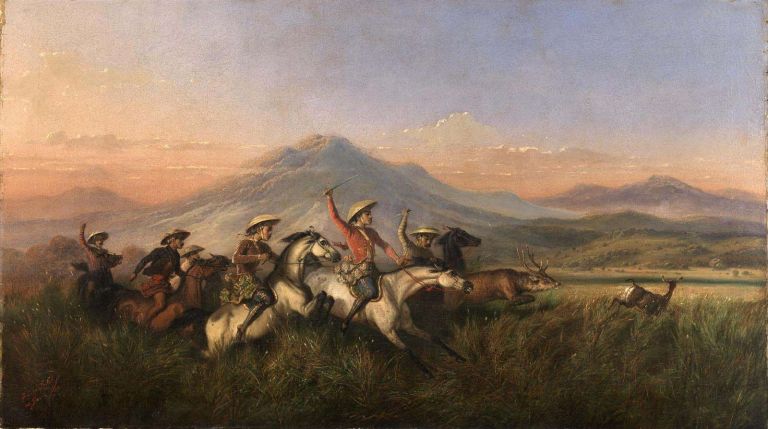“The sensing is incomplete, unfinished, and I am an illiterate child that was never taught to read / Most of us remain orphans to our own spirits.”
These lines from artist ila’s video work, Lupa (2021), haunt me though it has been days since I last visited it at Between the Living and the Archive, a group exhibition co-curated by Syaheedah Iskandar and Fajrina Razak that’s currently on at Block 9, Gillman Barracks.
In this work the artist attempts to make sense of her identity by uncovering missing ancestry information in her maternal lineage. Her mother never knew who her father was, and this information remains to this day shrouded in mystery. Those who know are unwilling to tell the tale, even as those who don’t, search desperately.
Poetic, haunting lines about the mystery of her familial past are interspersed with the more objective tenor of scientific principles such as DNA and gene expression, expounded by American astronomer Carl Sagan and Arab philosopher Ibn Khaldun:
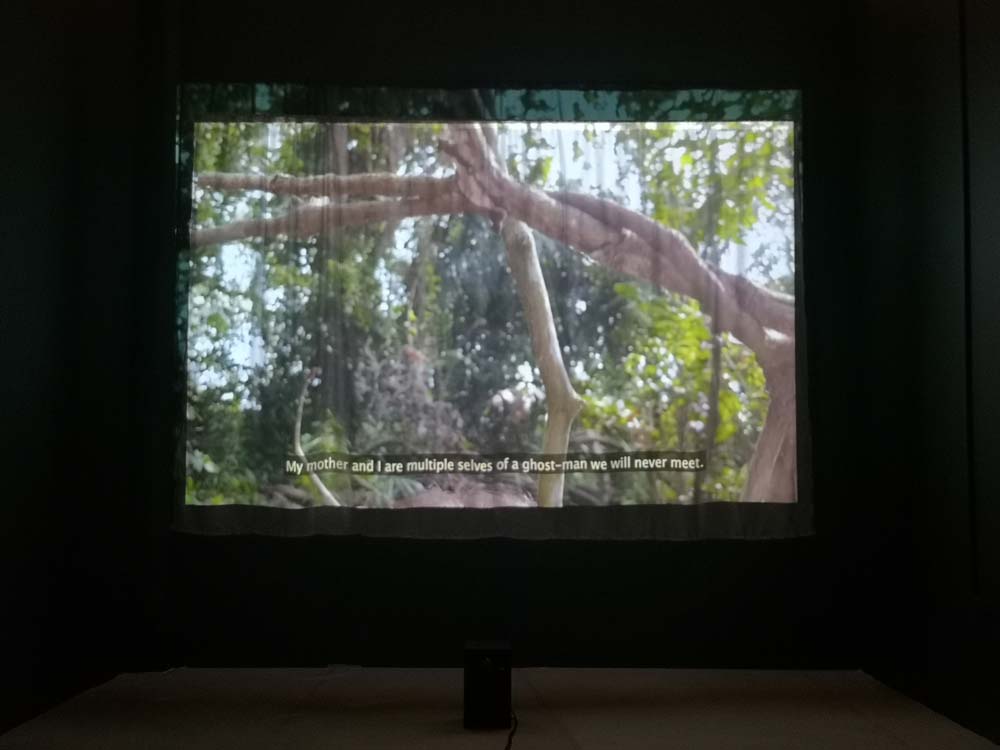
One cannot help but feel that this work – tinged with the frustration and desire of standing at the precipice of these unknowable gaps in information, and the contrasts that it draws between the deeply personal and the bird’s eye view – reads like a microcosm of the exhibition at large.
Between the Living and the Archive attempts to give space to the types of knowledge that are not typically honoured in the institutional archives as we know it; monolithic, presumably objective repositories of information that they are.
As Syaheedah puts it, “When it comes to the archive, it’s important but it’s also something that has been codified, systemised, classified based on Western ideas about what constitutes the archives. But what happens to (types of knowledge) that are built from something that’s not codified, that doesn’t have a language?”
Featuring works by 11 artists including Aki Hassan, Fazleen Karlan, Mary Bernadette Lee, Priyageetha Dia and Zarina Muhammad, this exhibition enumerates the various forms of knowledge that the body harbours: inherited mythologies, daily rituals, memories and sensory perceptions. These strands of embodied knowledge, while crucial in forming one’s sense of place, community, culture and history, may lay in the gaps between language and logic, knowable only to few, and difficult to transmit beyond the bodies in which it resides.
Embodied knowledge in the everyday
Suriani Suratman’s Ramuan (Ingredients) (2021) and Hamidah Jalil’s Kuno Indah (1994-1995) both allude to the kinds of knowledge that exist in the everyday domestic household setting.
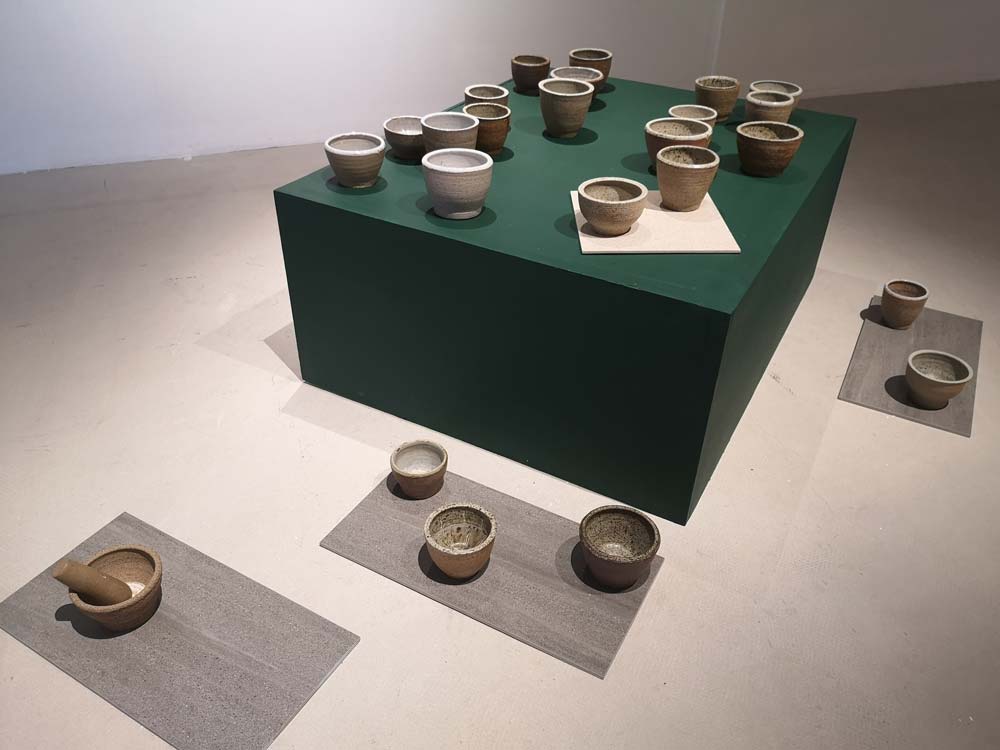
Referring to the crucial yet approximate – agak agak – knowledge that cooking entails, Suriani Suratman’s Ramuan (Ingredients) also points to the intergenerational exchanges of knowledge that typically occur around the batu lesung (stone mortar), a common traditional household item used to pound and grind spices into paste.
In her Kuno Indah series, Hamidah Jalil depicts artefacts that she has collected over her travels around Southeast Asia in an expressionistic, joyful manner that celebrates the traditions that reside in her hearth and home.
Lost in translation
It is interesting to note that Hamidah and ila have both requested for their artwork titles not to be translated into English. In a time of Google Translate, this poses but a small impediment to viewers and readers for whom the artwork title is an essential aspect of a work. But the gesture itself foregrounds how language functions as a barrier to entry, thereby determining what forms of knowledge are accessible to whom.
As I pull out my phone to translate the text, I find myself also wondering: what is lost in the interstices when things are translated from one language to another, given how all too often, there are nuances that do not survive translation?
I question the accuracy of what Google Translate spits out, yet in absence of a guide, or companions whom I can check with immediately, I lack any better way to know. Faced with these insufficiencies of language, how might people who do not speak the same language truly understand each other?
Beyond language and logic
This opacity of knowledge makes me think about how much of our understanding of the world is so contingent on the specificity of our own lived experience. Given how embodied knowledge resists language, and how it is bodily felt, it might simply be impossible for some people to fully comprehend what others seem to instinctively know.
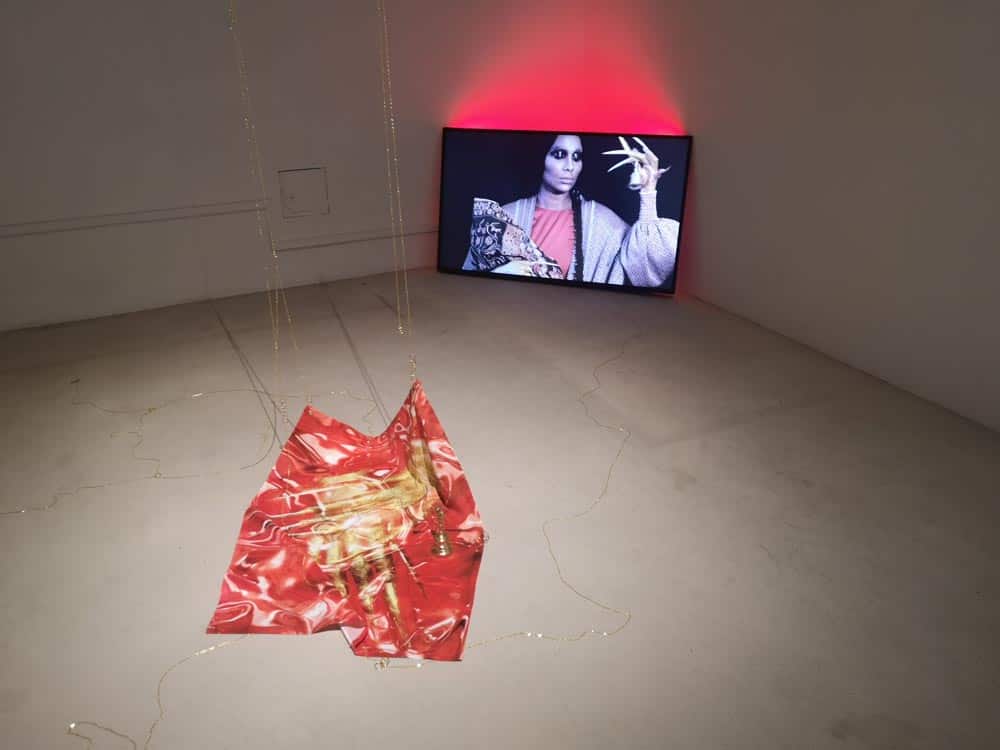
I feel this keenly in relation to Priyageetha Dia’s work, Rite of the time teller (2021). It is a work so rich and specific in sensory detail that every element beckons me to ask questions to try to unpack it piece by piece: What is the chain dangling from the ceiling made of, and what role does it play in this work? Why are there nails woven into the hair braid of the persona that the artist has taken on in the video? Is the long fingernailed hand of the time teller a Pontianak reference? Why is there a red glow emanating from the back of the screen?
The curators answer my questions with patience, sharing about how the artist presents a collection of gestures, sound and imagery cobbled together from her travels through India, her own familial household and the internet as a means of consolidating a personal archive of experiences and memories. It seems to be a sense-making exercise, a way to understand one’s cultural identity from a certain remove. The imagery on the video screen are all funneled through a shape like a doorway arch, and one gets the impression of peering through a threshold that, while somewhat accessible, remains distant and perhaps, ultimately impenetrable.
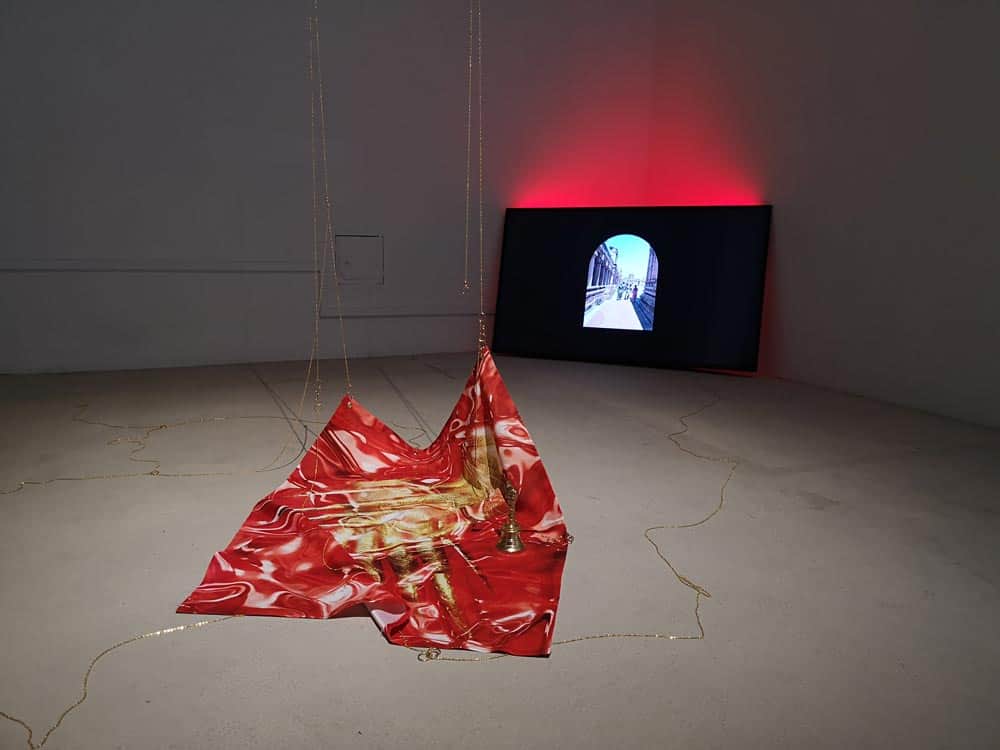
I recognise my position as an outsider looking in, and all it does it make me want to ask more questions. Would the answers have brought me any closer to understanding the nature of what the artists of Between the Living and the Archive are doing? The thing about embodied knowledge –“knowledge which is not distinctly explicit, conscious, mentally representative, or articulated” as Shogo Tanaka puts it in his 2011 paper, “The notion of embodied knowledge” – is that its full essence risks being lost in translation when verbalised.
It’s perhaps what Syaheedah means when she says, “I think sometimes you have to understand, Michelle, a lot of these works, especially when you’re dealing with certain knowledges, it’s best not to ask. Like in a sense, especially when you’re dealing with certain knowledges that are not codified, or something that’s very personal that deals with tradition and ancestral knowledge, it’s not really necessary to pick it apart. Also because it’s so layered, you just have to be content with the way it is.”
If this sounds strange to your ears, it is perhaps because you, like I, have grown up in spaces that prioritise the written word and forms of knowledge that can be made sense of because they cohere to the institutional frameworks of knowledge construction. It might also well be that the positions that you or I occupy are privileged ones, such that we are used to having access to information that has been crafted with our inclusion in mind.
Residing in the gaps between knowing
The kinds of knowledge that are transmitted by alternative means – through myth-making, through the skin, through pre-reflective perception, well, they may be less extensively documented or less accessible to you or I, but this exhibition proposes that it is no less crucial to archive these forms of knowledge.
This does however beg the question of how we might then make meaning out of these experiences that cannot be fully apprehended by our usual means of acquiring knowledge. Do we draw our own conclusions using the best assumptions that we can come to given what incomplete understandings we have?
Or do we, as Syaheedah suggests, content ourselves with sitting with the discomfort of never fully knowing, understanding that it is perhaps not for us to know?
Let’s go back to ila’s Lupa for a moment. Here the still human form co-exists alongside the tropical forest – a limb here, situated in the midst of branches that it bears a strong visual parallel to; brown hair fading to bleached blond half-covered by decomposing leaves, blending into the sinuous brown twigs of the forest floor. Body as boulder. Uncannily, a tongue, moist, pink, glistening, against rough bark.
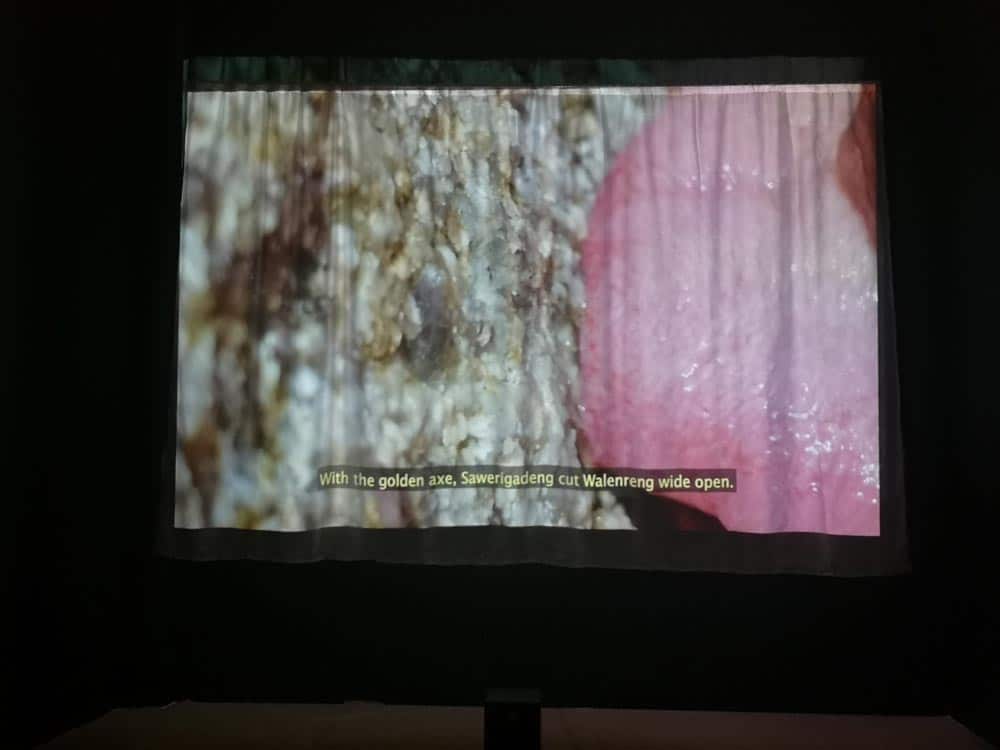
Drawing comparisons between the human and the non-human, the micro and the macro, age-old fable and personal history, ila tells a story of interconnectedness on multiple levels that weave in and out into a web. Projected onto a cloth that flutters softly in the air-conditioned room, all facts are just flickering in the wind, as if whatever knowledge is gained here is nonetheless tenuous and temporary against the wider scheme of universe.
We cannot know everything, and maybe there are things that are not for us to know. This idea resounds in ila’s work about her personal history, but also seems to be the coda that returns time and again in this exhibition.
There is also a fair amount of ambiguity in reading works such as Aki Hassan’s Growing a Pair (2021). To me, this trio of delicately leaning metal sculptures articulates the tensions in embodying a physical form that is at odds with one’s knowledge of oneself. In these slim forms there exists a sense of precariousness of being, as seen in the soft translucence in the phallus perched at the intersection of three upright metal rods. But someone else who approaches them from a different vantage point might come away with a completely different understanding.
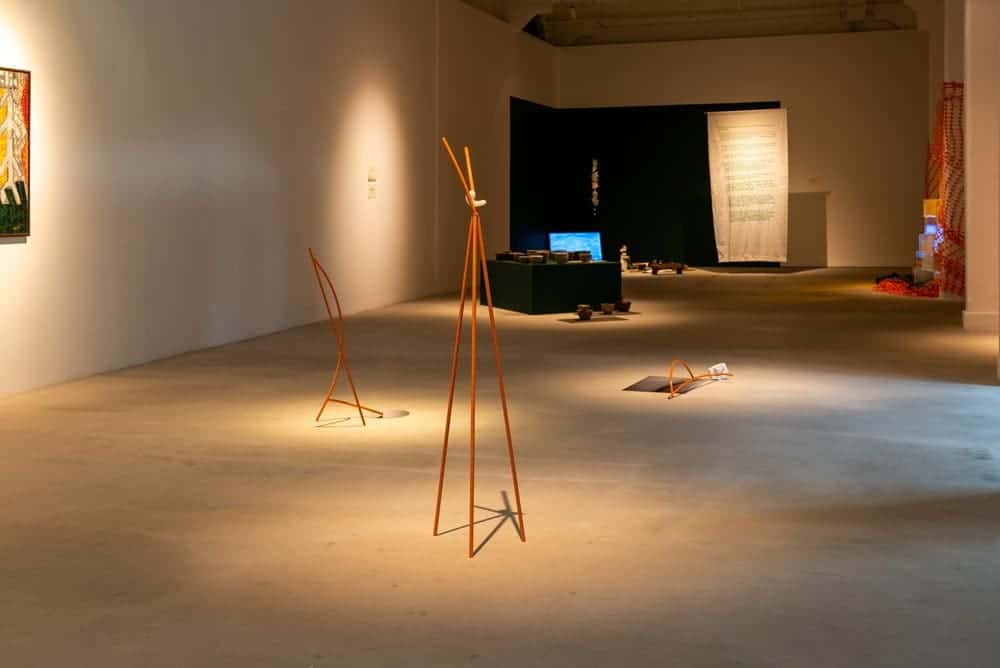
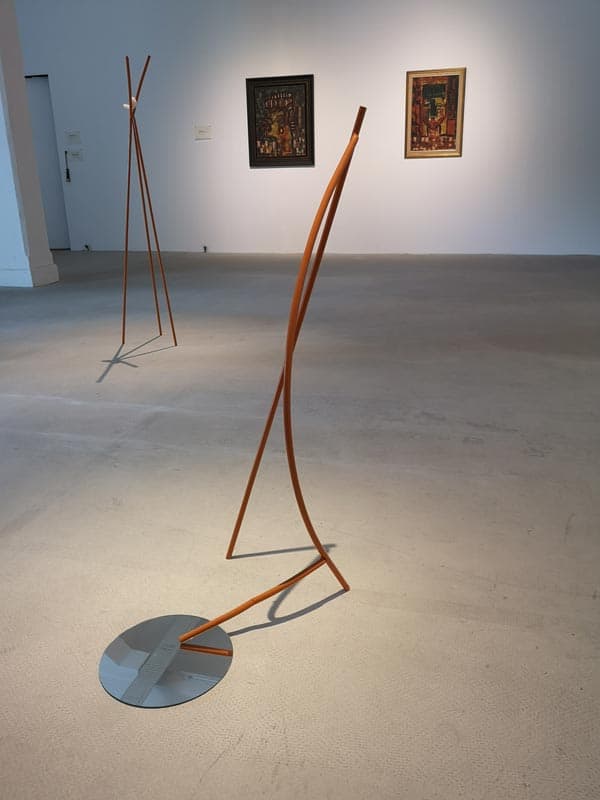
Is there a right or wrong way to intuit the meaning of art? One presumes that the knowledge contained in an archive is immutable, but when the archive comprises of artworks, this may not hold true – just as knowledge transmission and accessibility seem to work rather differently in this exhibition-as-archive.
Curator Fajrina Razak suggests that the artworks take on the form of a material archive that becomes separate from the artist themselves. As a material archive, these works presumably have the capacity to hold knowledge that can in turn be transmitted. How easily these wisdoms are shared vary from work to work, however, and in an exhibition devoid of artwork labels one must intuit meaning from the work from one’s own limited standpoint.
Perhaps the answer then is to accept that there is certainly never ‘one correct way’ to interpret things, or to understand them. We all construct our own understanding of the world from the limited vantage point of our singular perspective, hemmed in by the confines of our body, language, culture, privilege (or lack thereof). In a way, this is very much the essence of every art exhibition-viewing experience, and one that applies regardless of the amount of written guidance or wall text that accompanies a show. That feeling that you get when looking at a work, that inexplicable deep-rooted kick in the gut, or wash of emotions that has no logical basis – these feelings are what have primacy when viewing an exhibition like Between the Living and the Archive.
Does the show suffer as a result of its ambiguity? To a certain type of art-lover, for sure. In choosing to omit artwork labels from the walls and refraining from translating some of the artwork titles, the curators and artists reject traditional forms of explication to privilege intuition, ancestral knowledge and other less conventional means of acquiring knowledge. The usual institutional modes of knowledge acquisition have little power here, and those who find it a breeze wading through archives of a more conventional sort might conversely find this exhibition-as-archive less comprehensible.
For those who are more conversant with feelings of exclusion and marginalisation, perhaps there will be a certain resonance and sense of fellow-feeling. And for yet others who welcome the opportunity to immerse themselves in something totally foreign, there is the promise of an intensely personal communion with the artworks on display – one that is not constricted by the formal presentations found in commercial gallery spaces or large museums.
As a professional writer, used to navigating the world through words, I cannot help but feel handicapped in this exhibition. And so, in this manner, ila’s words echo once more in my head: “The sensing is incomplete, unfinished, and I am an illiterate child that was never taught to read.”
As a thinking and feeling human being however, I am reminded of my own complicated emotions; moods and reactions for which there are often no words, or which I simply have no capacity to articulate for a wider general audience. And in that frame of mind, the exhibition makes perfect sense.
______________________________
Between the Living and the Archive is on view at 9 Lock Road #03-22, Gillman Barracks from now until 28 March 2021. As of 17 March, the works – and their artwork labels – can also be accessed via the exhibition website.
Feature image: Exhibition view of Between the Living and the Archive. Image courtesy of Syaheedah Iskandar and Fajrina Razak.
